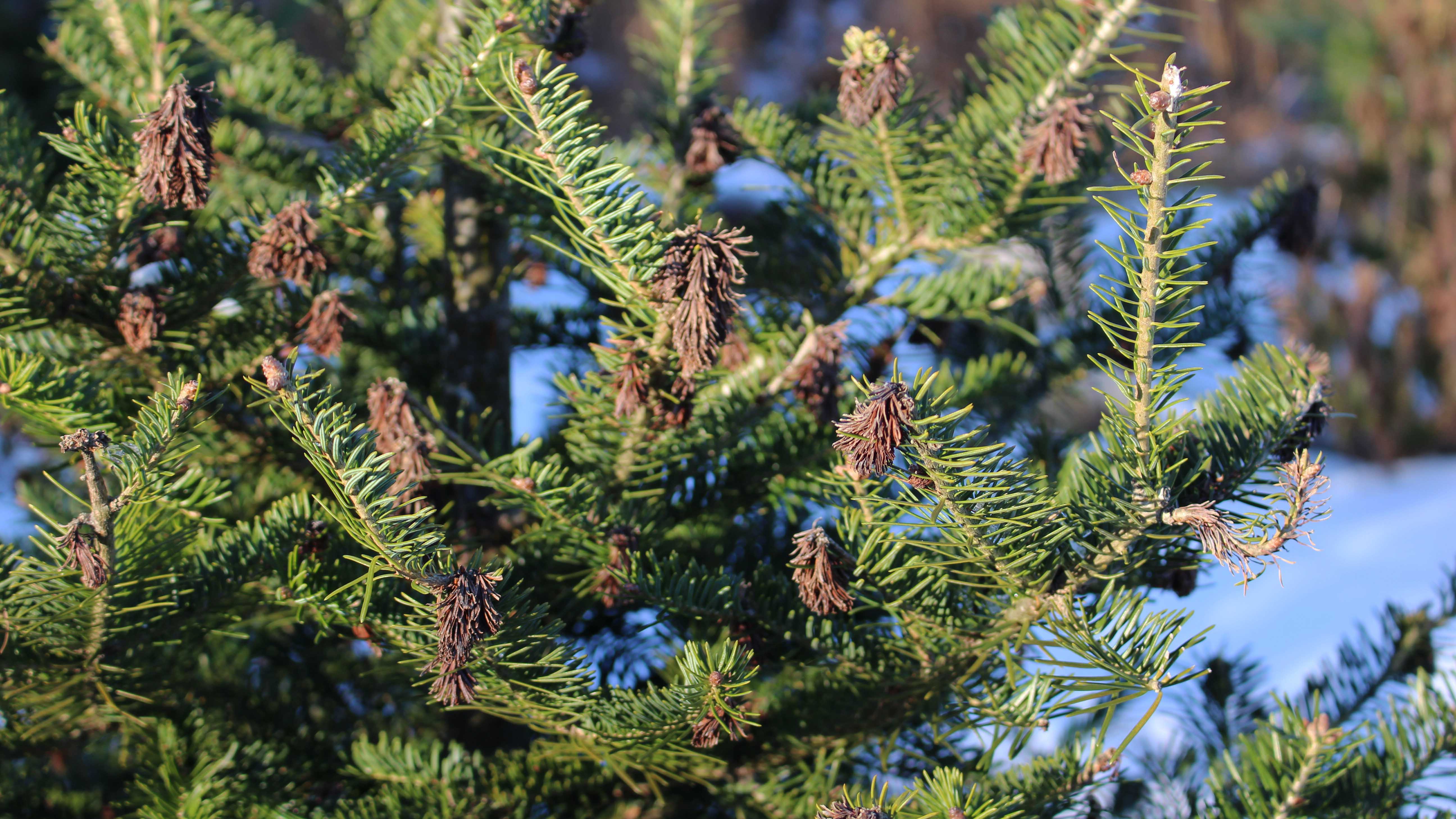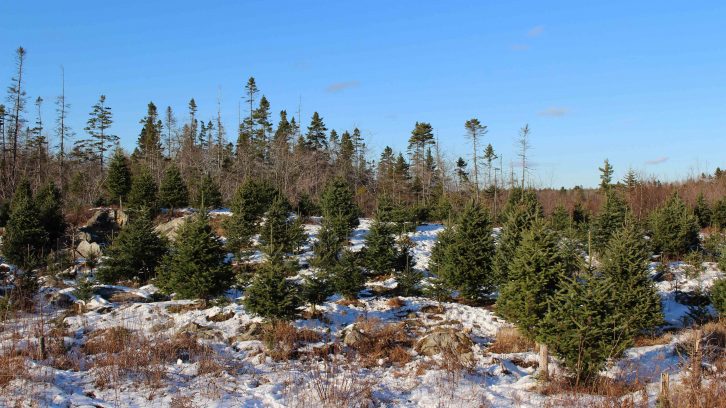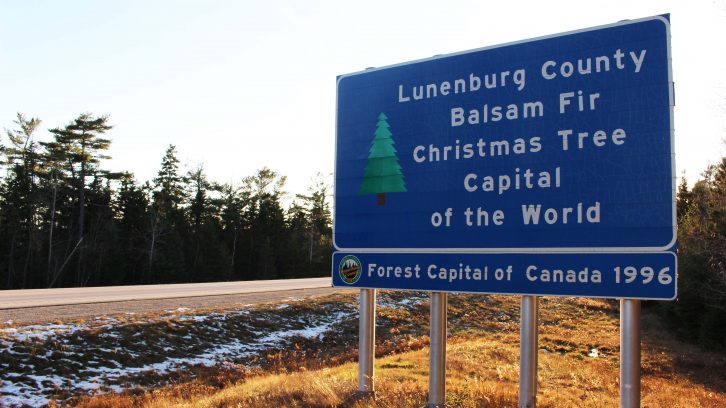Christmas Trees
Christmas tree industry braces for impact after ‘once in 100 years’ summer freeze
But farmers say there will still be a Christmas tree for everyone

caption
The tips of the balsam firs are evidence of damage from the frost.Nova Scotia Christmas tree farmers are focusing on the local market, after a freak spring weather event ruined an estimated one-third of the province’s marketable crop of balsam firs.
“I actually had to shrink so that I could take care of my established client base,” says Matthew Wright, a Christmas tree farmer from New Germany.
Wright had to turn down an opportunity to expand his business into the U.S. due to the damage to his crop.
In early June, temperatures across the Maritimes fell below 0 degrees Celsius. As the growing season was well underway, frost and heavy wind damaged many agricultural products, ranging from blueberries and apples to balsam firs. Specifically, the low temperatures caused the ends of some trees to turn brown and die, destroying two years of growth in some cases. Many of those trees will be unmarketable this year.

caption
Farms in southwest Nova Scotia were hit harder than those in the central and northern parts of the province.Richard Leavy, president of the Lunenburg County Christmas Tree Producers’ Association, says many local exporters, like Wright, have had to adjust their orders to account for damaged trees.
“They’re trying, of course, to give some trees to everybody, but that’s unrealistic,” he says.
This year, Leavy estimates there’ll be a 40 per cent reduction in marketable trees across the province. Angus Bonnyman, executive director of the Christmas Tree Council of Nova Scotia, predicts it’s closer to 30 per cent. Either number will make it hard for farmers to fulfill their orders.
Some areas worse than others
While the damage was widespread, Wright says most of the affected trees were in the southwest area of Nova Scotia, particularly New Ross.
“It’s very saddening to see what’s happened to some farmers,” says Wright. “I’ve seen lots with 80 or 90 per cent of the trees burned to the point where they won’t be able to sell this year.”
The CTCNS says Nova Scotia produces somewhere close to one million Christmas trees annually, the second highest in Canada behind Quebec. A recent report from Statistics Canada found that Nova Scotia exported over 350,000 trees in 2016, bringing over $7 million into the province.

caption
Nova Scotia is Canada’s second highest exporter of Christmas trees, after Québec.‘Beyond anyone’s control’
Bonnyman says the farmers’ customers understand the situation.
“It sounds as though they know that this is a once in 100 years weather event beyond anyone’s control,” he says.
Still, farmers like Cindy Moore from Barss Corner are nervous about the frost’s lasting effects.
“It’s going to show up for us more next year than it did this year. We have tree lots that we drove into and left, that we didn’t even shear because we’ve got to see what’s going to happen to those trees,” she says.
Waiting for spring
Because of the nature of the damage, tree farmers will have to wait until the May growing season to know whether or not their trees will fully recover.
“They’re either going to try and recoup and fix themselves, or they’ll be chopped down and made into fertilizer,” Moore says.
Wright says the industry might not survive another event like the freeze.
“I laughingly say to people if we have another frost freeze event like this, I’ll be looking for another job,” he says. “We couldn’t take too many years of this in a row; the industry would have to dramatically redefine itself with different species, or different growing techniques.”
Bonnyman says there will be “a Christmas tree for everyone in Nova Scotia” this year, but shoppers should start looking early.

